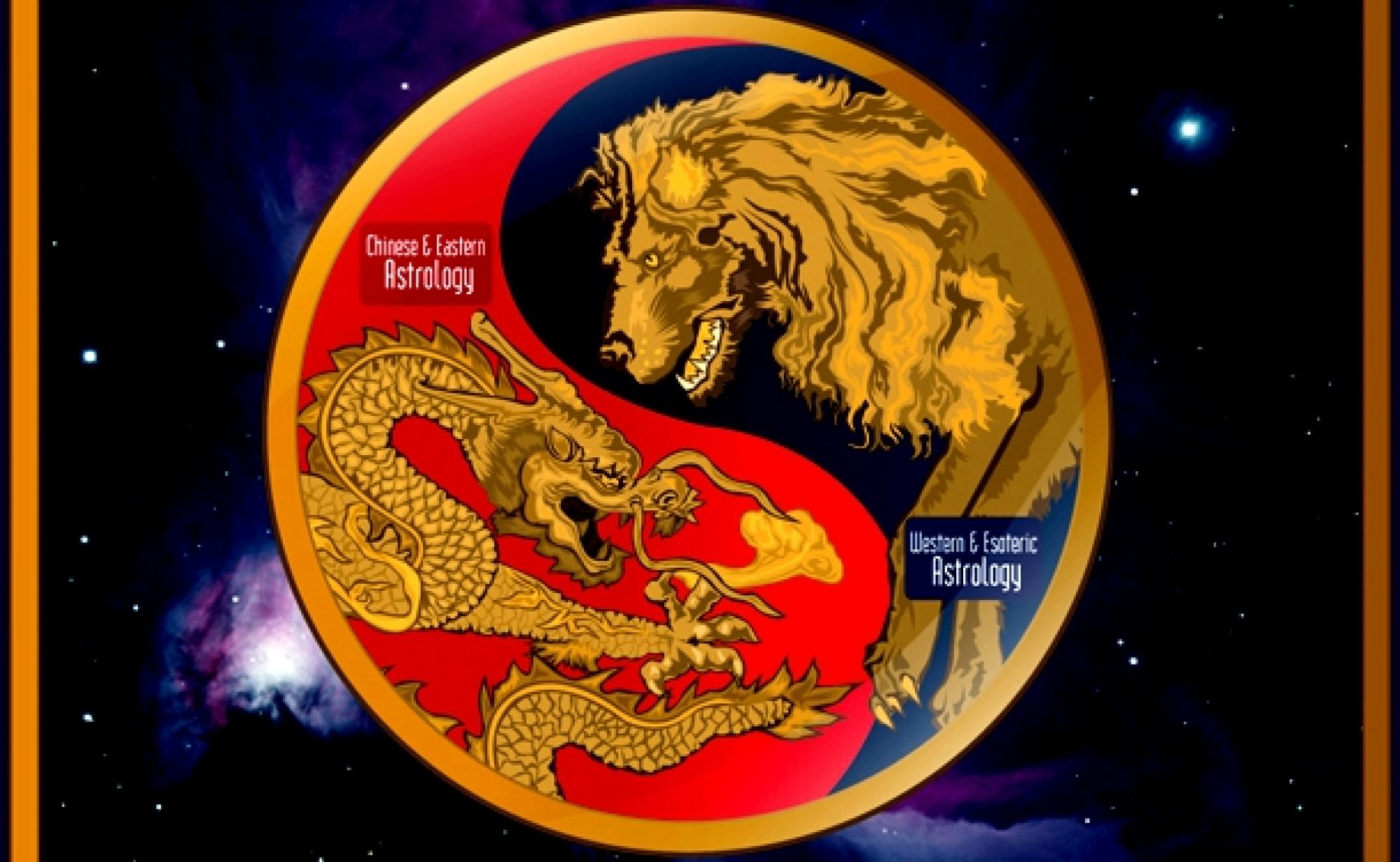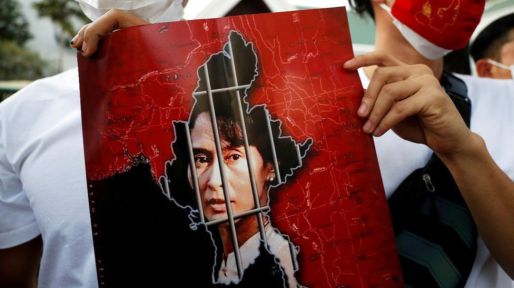In the early morning of 1 Feb 2021, the military in Myanmar staged a coup, as it is being called in the news, arresting Aung San Suu Kyi and other members of her ruling party. She is the de facto leader of the nation. This is a developing story and will be updated as more information emerges. The military is quite powerful in Myanmar, which has only seen democracy for a few years now, having been ruled by military juntas since its independence from the UK in 1948. We’ll have a look at the astrology of Myanmar and the coup here.
The coup took place roughly coinciding with cuts to internet services in the country at around 3:00 AM local time. Cuts to internet services can indicate something is up in a nation, being cut by security services for a variety of reasons. The military in Myanmar has 25% of the seats in Myanmar’s parliament, according to its constitution. The constitution was set up by the military to protect its influence. This can be seen in Myanmar’s chart, below (bigger):
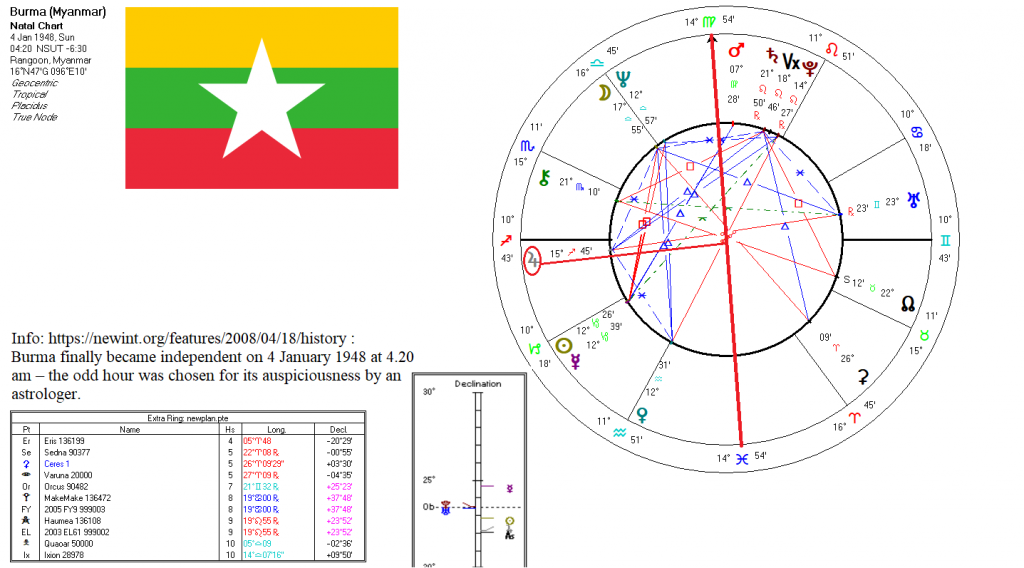
The military in any national chart is ruled by the 6th house specifically, and by Mars generally. In Myanmar’s chart the 6th house is ruled by stubborn and persistent Taurus, and Venus thereby. Venus also rules Myanmar’s 11th house, which represents their parliament, along with the will of the people. Venus is otherwise well aspected, being sextile Jupiter and trine the Moon/Neptune conjunction, the latter straddling the 11th house cusp. But then we note the opposition of Venus and Pluto across the 3rd/9th house axis – communications, commerce, the press and media, and international relations.
The chart on the whole is rather interesting. It was set up by an astrologer, whom I would assume would have been Burmese. Burmese astrology, “…consists of not only the same 12 signs of the Western zodiac but also 27 lunar mansions of the month and eight weekday signs.” Its origins are Vedic/Hindu. For us, the Western astrology fits the bill here, as their signs are identical to ours.
The chart is also interesting in its construction. It consists of a series of sextiles which also form a series of interlocked triangles. Starting with Venus and going clockwise through the chart, the sextiles are between Venus, Jupiter, the Moon, Saturn and Uranus. This suggests a ‘locomotive’ type of chart, described by Marc Edmund Jones. The leading planet in such a chart gives unusual force to it. In this case that leading planet is Uranus, retrograde and in the 7th house, which we will consider shortly.
The Myanmar Sun is in Capricorn, suggesting crystallization and a power structure that constantly seeks to maintain the status quo, which has been the military until recently. The Sun/Mercury conjunction in the chart is cazimi (within 13’ of arc) and is also in a partile square to Neptune, which carries the following meaning: “The play of imagination, the development of fantasy and imagination, inspiration, the tendency to simulate and to deceive oneself. – Writers, visionaries and also swindlers or crooks. The experience of deception.” That describes the midpoint structure, which is essentially what it is.
In addition to the Sun/Mercury conjunction, Mercury is out-of-bounds (OOB), headed back in-bounds, which it did by progression in 1955. The latter manifested as the Burma-Japan Peace Treaty, which formally ended the hostilities between the two nations as a result of WWII. At the time there was a progressed Great Cross involving Venus, Saturn, Chiron, the nodal axis and the Vertex axis. In addition, the progressed balsamic moon phase was due to finish in a month, thus showing the start of a new cycle for Burma, Myanmar’s name at the time. And lastly, the progressed angles saw the Ascendant to Jupiter and the MC square to Uranus. It was a new start for Burma, and saw the end of much of the legacy of WWII in Burma.
Mercury OOB often manifests as people (or nations) being very forthright in their speech, often too much so, in unexpected outbursts, colourful or inventive use of language and even just too much talkiness. Mercury is quincunx Pluto, suggesting the forceful use of language, more covert use of media, media as a tool of control rather than information and often missteps in communications and frequent gaffes. Added to that, Mercury is in Capricorn, showing conservative bias in the media, but also concentrative force, a tendency to shrewdness and craftiness, with ambition strongly marked.
Returning to the Sun/Mercury/Neptune combination we add the Pluto/Ascendant midpoint, which can indicate a tendency to will-power, ambition, the striving for power, or to dictatorship or rule by force, as well as repulsive behaviour. We were certainly seeing the latter on Feb 1st. Coupled with the Sun/Mer/Nep combination, it gives quite a changeable and even nefarious tone to the power structures in the nation. And that brings us back to Uranus.
With Uranus as the leading planet in the chart and in the 7th house, we have a nation that is subject to sudden changes, but which can also be rather humanitarian in its outlook into the future and forward thinking. Needless to say, these latter demonstrations of Uranus have yet to show with Myanmar. And as a nation in its current form, it is still in its infancy, though the people are of ancient roots. The recent Rohingya genocide is a case in point regarding sudden changes and the lower side of Uranus, which has forced a million Rohingya to flee Myanmar to other nations, largely to Bangladesh, which has resulted in the deaths and rape of thousands of Rohingya. The Rohingya are Muslim and have been persecuted by nationalist Buddhists (which is anachronistic to the latter’s faith) and the military in Myanmar.
Uranus in Myanmar’s chart functions in its lower state at the moment, producing periodic upheavals, both in government and the populace. The 9th house placement of Pluto shows the use of religion as a power play and its use for more nefarious purposes, noting also the wide Saturn/Pluto conjunction also has the Vertex at its midpoint, giving a dark or reactionary outlook in 9th house matters – religion, the judiciary, the national ideals and foreign relations. It is also a combination that can show as heavy-handedness, mass murder, cruelty and violence on the one hand, and when usefully expressed, toughness, tenacity, the ability for prolonged, hard and steady work. At its highest, it can indicate occultists, magicians and adepts.
Then, we see Saturn at the bending of the nodal axis and square to Chiron (What was the astrologer thinking when they set up this chart?! We’ll see in a moment.). The square to Chiron shows in people who undergo ‘experience’ in affairs of the heart. It can mean heartbreak, in other words, and yields the hard experience that leads to intensive self-examination, or wallowing in one’s misery, whichever of the two paths is chosen. Misery can lead to self-examination, too. Regardless, Saturn square to Chiron is not a ‘happy camper’ aspect.
Saturn at the bending of the nodes also leads to missteps and ‘experience’ in relationships, the nodal axis representing an experiential and relationship axis. The square in particular shows first as a lack of cooperation between parties with a more or less constant re-evaluation of relationship priorities, with some factions (in a national chart) seeking to hold on to the past, while other factions seek to move into the future. Saturn calls them both to task and demands cooperation or separation, the ultimate goal being one of resolution of any karmic remnants between the two prior to making new starts. This is what we see in Myanmar as it seeks to move into a more democratic model.
Speaking of Saturn, this brings us back to the astrologer who chose the time for the national chart. That astrologer, as mentioned, probably used Vedic astrology, which sees the outermost planet as being Saturn. Vedic astrology does not use the extra-Saturnian (outer) planets. Looking at the chart with the Vedic planets, the view is much simplified and far more optimistic than the modern astrology paints it. It also misses many of the points just made, the latter being born out in history, more so than what we see in the Vedic chart. Modern astrology adds great depth to a chart, whereas many astrologers see Vedic astrology as being fatalistic, as the ‘last planet’, Saturn, would suggest. Saturn as the widest view – as in how the solar system is perceived – suggests that everything that happens in life is karmic in nature (which to a great degree is true). But everyone does have a measure of free will, too. The view of life with Saturn is limited to what we can see with the naked eye. The subjective tends to be removed from the ‘equation of life’ and one’s ambitions take center stage.
We won’t enter into Vedic astrology here, save to say we can see why a Vedic astrologer would have chosen this chart – Jupiter on and ruling the Ascendant in the 1st house, sextile the Moon and Venus and trine Saturn, a combination that speaks of great success, high optimism and great wealth. We note also that the Sun and Saturn are in mutual reception, giving a real emphasis on ambition and high goals, shown by the Capricorn Sun. Burma’s history has been a little bit different from that, as we have seen since its founding.
In considering all of the preceding, that brings us to the current situation in Myanmar. We won’t go through Myanmar’s history here. The chart for the coup is below (bigger):
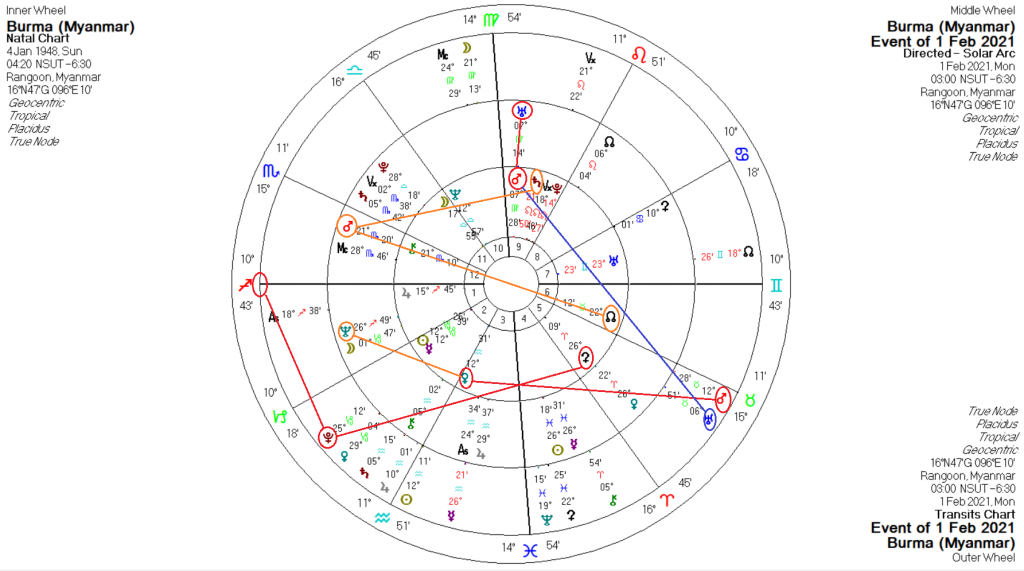
So, here is the main question as we look at this chart: Is this event a real coup, as in a radical change of government, or yet another bump in the road toward a more stable democracy? To start, for a coup in a national chart, the MC (sitting government) becomes the prime focus and directions to that and the MC’s ruler. In this case, the MC is Virgo, ruled by Mercury. Thus we would be looking for more revolutionary directions to the MC and Mercury. The bottom line here is that neither of those are showing in the coup chart, either by directions or transits, nor by secondary progressions for that matter. What we see instead is a direction of Uranus to Myanmar’s Mars. That in itself shows sudden events regarding the military, but is not in itself enough to show a coup.
The main problem that has led to this coup is not with the government, but with the military. From the Wikipedia page on Myanmar, we have this:
“The major political parties are the National League for Democracy and the Union Solidarity and Development Party.
Myanmar’s army-drafted constitution was approved in a referendum in May 2008. The results, 92.4% of the 22 million voters with an official turnout of 99%, are considered suspect by many international observers and by the National League of Democracy with reports of widespread fraud, ballot stuffing, and voter intimidation…
Myanmar’s political history is underlined by its struggle to establish democratic structures amidst conflicting factions. This political transition from a closely held military rule to a free democratic system is widely believed to be determining the future of Myanmar. The resounding victory of Aung San Suu Kyi’s National League for Democracy in 2015 general elections has raised hope for a successful culmination of this transition.
Myanmar rates as a corrupt nation on the Corruption Perceptions Index with a rank of 130th out of 180 countries worldwide, with 1st being least corrupt, as of 2019.”
A good rundown on the situation on the ground in Myanmar was given on Al Jazeera on the day of the coup. There are several factors of recent development at play in this coup, and as to whether or not it will hold. Firstly, the coup sounds suspiciously familiar to the recent kerfuffle in the US about voter fraud. Aung San Suu Kyi won the general elections in November of 2020 in a landslide. The army cried foul and fraud. A top general had suggested abolishing the constitution if it isn’t followed. He has since walked back his remark, but it has not gone unnoticed. This general, Min Aung Hlaing, is now in power. A one-year state of emergency has been declared, with a call for new elections after that.
The military fears losing their power. There were talks within the government last year aimed at reducing that power, which would mean reforming the constitution. The army has said it may take further actions if its complaints of voting irregularities are not addressed. The military’s 25% of seats in parliament allows it to veto any changes to the constitution. With this last point in mind we see that the process of weaning power away from the military will take probably years yet.
Aung San Suu Kyi’s strategy in the past few years has been not to criticise the military for internal struggles so as to try to curry favour with the military. Clearly, that strategy has not worked, and the relations between her and the military have deteriorated to the point we see now. With this latest move, the military could well be banking on the backing, at least behind the scenes, of the US, counting on the fact that the US is trying to rally Southeast Asian states to form a bloc to ‘contain’ China. On the other hand, China has had traditionally good relations with Myanmar.
Certainly behind the scenes in this coup, however long it lasts, is the signing of deal between Aung San Suu Kyi’s ruling party with China in relation to BRI projects in Myanmar, the main one being the China-Myanmar Economic Corridor (CMEC). Myanmar is envisioned as a key hub in the BRI.
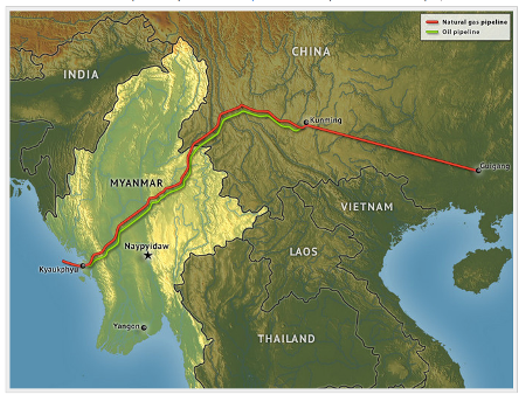
The deals were inked on 18 Jan this year, which is coincidental if not suggestive regarding this coup. There are plans for railways linking to a deep sea port in the state of Rakhine, remembering the Rohingya genocide, where oil pipelines to China already exist. The port is seen by China as an important strategic alternative energy hub, as it avoids the narrow and strategically sensitive Malacca Strait, which is a choke point in China’s major shipping route and easily closed off by a powerful navy.
The military in Myanmar is rumored to be somewhat wary of the Chinese, but that is questionable. One has to wonder if the genocide in Rakhine had the planned BRI projects in the background, though this is somewhat doubtful given the religious animosity that exists between the majority Buddhists there and the Muslim Rohingya. Looking at the CMEC and other infrastructure plans that run through Myanmar, it throws another light on the Rohingya in the Rakhine province, which also has BRI projects running through it.
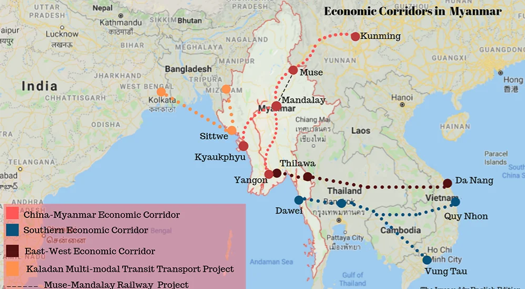
On the other side of the Chinese question in this episode is US involvement via NGOs in support of Aung San Suu Ki and promoting democracy in Myanmar. While it is easy to say the military wants to stop BRI projects in Myanmar, they have actually been involved in building at least part of those projects. There are over 80 American NGO initiatives in Myanmar supporting the government in distinction to the military, along with resistance groups along Myanmar’s border with China.
So, we may see an effort toward a purge of at least some of these NGOs in Myanmar by the military in these next months. And it is rather telling that Aung San Suu Kyi has not been released. In short, there are mixed messages about American and Chinese interests in Myanmar, and it will take time for the truth of these matters to become clearer In the meantime, Myanmar is one of the nations at the coal face in America’s efforts against China, and that cannot be ignored in what is taking place with this coup.
A word here needs to be said about the Buddhists in Myanmar. The main Buddhist lineage in Myanmar is Theravadan, considered by Mahayana Buddhists to be a lesser path. It is a more solitary path and does not see the bodhisattva way as the primary means to enlightenment. Theravadins follow the ‘1st turning of the wheel of the dharma’, the most ancient form of Buddhism. They have also become quite militant in recent years, fearing minorities would pollute their faith and feeling themselves to be under siege. This was partly at the root of the Rohingya genocide starting in 2016. Almost 90% of the populace in Myanmar are Theravadan Buddhists, with some very militant extremist factions among them. This goes back to the Saturn/Pluto/Vertex conjunction in the 9th house of Myanmar. Theravada is a very conservative, sometimes reactionary faith.
The Myanmar constitution states that a military takeover can only last for one year, at which time elections must be held. The military has stated it will not abolish the constitution (which favors them anyway). Instead, the ‘coup’, as it is being called, (coups usually mean suspension of a nation’s constitution and overthrow of the existing order) looks to be more in the vein of keeping the status quo of military representation in parliament and the current constitution in place. There is nothing in the coup chart that shows a change in government. Nonetheless, the military’s move will have very negative effects on Myanmar’s economy and development.
With these points in mind, looking at the coup chart, then, the main thing we see is a direction of Uranus to the natal Mars, showing a sudden turn of events for the military and an urge to greater independence in that regard, as well as a sudden willful act on the part of the military. There are no directions or transits to Myanmar’s 10th house of Mercury, which would be necessary in a true coup attempt.
Mars in Myanmar’s chart rules the 5th and 12th houses, showing this to be a big gamble (5th house) on the part of the military, which will likely bring ruin on business interests in Myanmar (also 5th house), as well as disrupting the public’s happiness (5th house) and casting the morals of the state (5th house again) in a poor light. The 12th house activation by that direction also shows possible actors behind the scenes seeking to thwart the initiatives of the ruling party (secret enemies of the state), remembering the military casts a wary eye on China’s involvement in Myanmar-Chinese relations, which would go to serve the interests of nations like the United States. But the coup will not play well in the international community, as we are already seeing, and the gamble the military is taking may well blow back hard on them.
International condemnation of the coup was swift, with Western nations calling for the immediate release of all detained government officials. That has largely happened, with the exception of Aung San Suu Kyi. Her whereabouts are still unknown. Eleven ministers and deputies, including those in finance, health, the interior and foreign affairs, have been replaced, in yet another attempt by the military leadership to shore up their power base. The general in charge now has said the coup was ‘inevitable’ and military investigations into the vote count for the November elections are underway. Civil unrest is already starting to build in the nation.
One of the key directed midpoints to consider here is the directed Sun/Moon midpoint, now in orb of the natal Pluto: “A soul torn by inner conflict, biased attitude or changed circumstances lead to critical phases of development in life or to separation from others.” Then there is the directed midpoint to the natal Sun, Mercury/Pluto=Sun: “A persuasive speaker, a keen observer, circumspection or prudence and vision. – The desire to gain recognition.”
The situation in Myanmar will drag on, shown by the approaching direction of the Mars/Neptune midpoint to the nation’s Ascendant, Mar/Nep=Asc: “A weak and unstable person, a lack of vigour necessary for advancement in life. – The sharing of grief and sorrow with others, the termination of associations or unions.” So, stability and internal security is very likely to deteriorate in Myanmar in the coming months.
We can fully expect sanctions to be placed on the military should the situation in Myanmar continue. The military’s income is shown by the 7th house, with foreign income shown by the Ascendant (2nd and 8th houses from the 6th house), that weakness shown by the Mars/Neptune direction. However, support for the elected government will grow stronger, starting in about 6 months, as the Sun/Jupiter midpoint comes within orb of Myanmar’s MC and Meridian axis: “Aspiring health, wealth and possessions. A happy, harmonious and wealthy person. – Good luck in one’s own enterprises.” That will be exact in two years.
Looking at the longer term, there will probably be a compromise made with the military by the government at some point. The military’s position is weak, shown by the directed Sun/Neptune midpoint to the natal Venus, the latter ruling the 6th house (services, military). The military in Myanmar is over half-million strong, though, and is not readily subjected to civilian rule. They enjoyed power in the nation for around 50 years. They will hold on as long as they can.
Lastly, Aung San Suu Kyi enjoys large popularity in Myanmar. But, she walks a very fine line in seeking to establish a stronger democracy there. She was roundly criticised for not criticising the Rohingya genocide herself, with calls for her Nobel Peace Prize to be revoked as a result. Given what has just happened, it is not difficult to imagine why she did not denounce the military then. We might also imagine what would have ensued had she stood up and done so. Her relations with the military have been very tenuous at the best of times. She was held in house arrest for years by the military prior to her release and ascension to government.
The British have introduced a motion in the UN Security Council denouncing the coup and demanding that all people detained be immediately released and the government restored. China and Russia vetoed the measure, saying they needed more time to consider it. Myanmar’s Eastern neighbors are saying the situation in Myanmar is an internal matter and needs to be settled peacefully within the framework of the existing constitution. Western nations, on the other hand, have adopted an aggressive approach. As stated previously, democracy in Myanmar as we in the West would like to see it is going to be a long road. But at present, Aung San Suu Kyi is the best hope for Myanmar. From the astrology, the military will have to cave.
Featured pic from BBC
